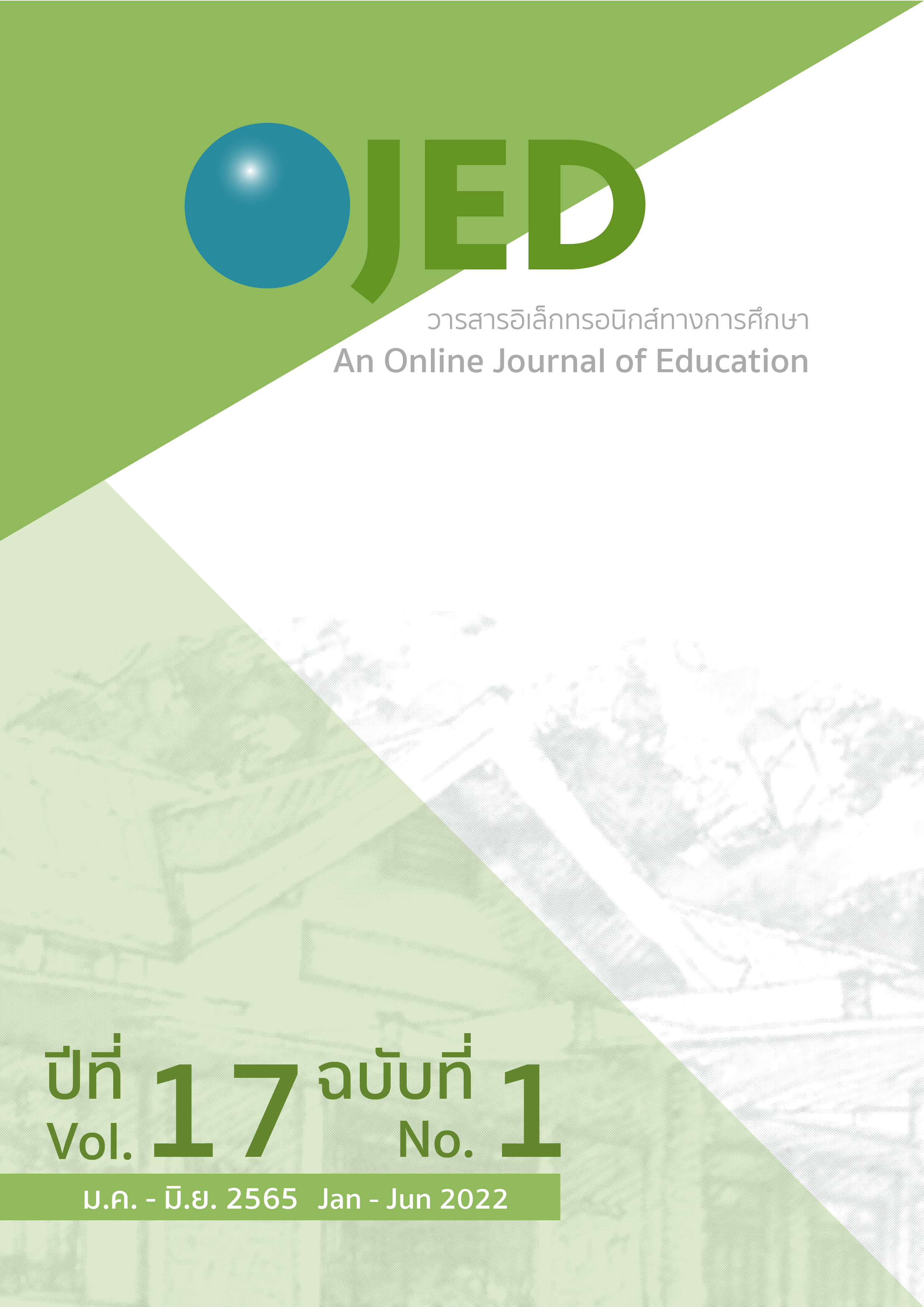The Results of the Study of Basic Information and the Development of Teaching and Learning Models to Promote the Ability to Use Technology of High School Students
DOI:
https://doi.org/10.14456/ojed.2022.17Keywords:
technology, instructional model, constructivismAbstract
The objectives of this research were to study and analyze the basic information and the requirement about of teaching styles to promote the ability to use technology. The target group included 35 students and 8 teachers. The data were analyzed by frequency, percentage, mean, standard deviation and content analysis. The results of the research when considering the first requirement of each aspect, it was found that the learner side was the need for knowledge in using technology media to solve problems creatively (M=3.63, SD=0.69). Student wanted teachers to give students time to practice their skills (M=3.82, SD=0.62). In terms of teaching materials need technology materials used in learning that are up-to-date and met the interests of students (M=3.78, SD = 0.55) and the evaluation aspect student expectation to have a method to measure and evaluate students' ability to use technology media accordingly (M=3.86, SD=0.65). Therefore, the teaching model to promote the ability to use technology of upper secondary school students uses the “ISKAR Model” which consists of 5 steps: 1) Introduction 2) Self-Activate Prior Knowledge 3) Knowledge Construction 4) Action, and 5) Reflection. The evaluation of model result was in the high level. (M=4.00, SD=0.57)
References
กระทรวงศึกษาธิการ. (2552). หลักสูตรแกนกลางการศึกษาขั้นพื้นฐาน พุทธศักราช 2551. โรงพิมพ์ชุมนุมสหกรณ์การเกษตรแห่งประเทศไทย จํากัด.
กระทรวงศึกษาธิการ. (2560). ตัวชี้วัดและสาระการเรียนรู้แกนกลาง กลุ่มสาระการเรียนรู้วิทยาศาสตร์ (ฉบับปรับปรุง พ.ศ. 2560) ตามหลักสูตรแกนกลางการศึกษาขั้นพื้นฐาน พุทธศักราช 2551. โรงพิมพ์ชุมนุมสหกรณ์การเกษตรแห่งประเทศไทย จํากัด.
ทิศนา แขมมณี. (2552). ศาสตร์การสอน: องค้ความรู้เพื่อการจัดกระบวนการเรียนรู้ที่มีประสิทธิภาพ (พิมพ์ครั้งที่ 10). ด่านสุทธาการพิมพ์.
ปิยะมาศ พยัคฆเดช และ สิรินาถ จงกลกลาง. (2562). การศึกษาผลการเรียนรู้ หน่วยการเรียนรู้โลกาภิวัตน์และความคิดสร้างสรรค์ของนักเรียนชั้นมัธยมศึกษาปีที่ 5 โดยใช้การจัดการเรียนรู้แบบซิปปาร่วมกับแนวคิดการจัดการเรียนรู้แบบ Connectivism. วารสารศึกษาศาสตร์ มหาวิทยาลัยบูรพา, 30(1), 104-114.
มาเรียม นิลพันธุ์. (2558). วิธีวิจัยทางการศึกษา (พิมพ์ครั้งที่ 9). โรงพิมพ์มหาวิทยาลัยศิลปากร.
สำนักงานคณะกรรมการพัฒนาการเศรษฐกิจและสังคมแห่งชาติ สำนักนายกรัฐมนตรี. (2559).
แผนพัฒนาเศรษฐกิจและสังคมแห่งชาติฉบับที่ 12 พ.ศ. 2560-2564. https://www.nesdc.go.th/ewt_dl_link.php?nid=6422
Curtis, D. H. (2003). Constructivist Methods for the Secondary Classroom. New York.
Fesol, S. F. A., & Salam, S. (2016). Towards MOOC for technical courses: A blended learning empirical analysis [Paper presentation]. the 2016 4th International Conference, User Science and Engineering (i-USEr).
Lasley, Matczynsk and Rowley (2002). Instructional model: Strategies for teaching in drivers society. Thomson Learning Academic Recourse Center.
Parsons, R. D., Hinson, S. L., & Sardo-Brown, D. (2001). Educational psychology: A practitioner-researcher model of teaching. Wadsworth/Thomson Learning.
Siemens, G. (2005). Connectivism: A learning theory for the digital age.
http://www.itdl.org/journal/jan_05/article01.htm
Siemens, G. & Downes, S. (2009). Connectivism and connective knowledge.
https://downes.ca/files/books/Connective Knowledge.
Downloads
Published
How to Cite
Issue
Section
License
Copyright (c) 2022 An Online Journal of Education

This work is licensed under a Creative Commons Attribution-NonCommercial-NoDerivatives 4.0 International License.




